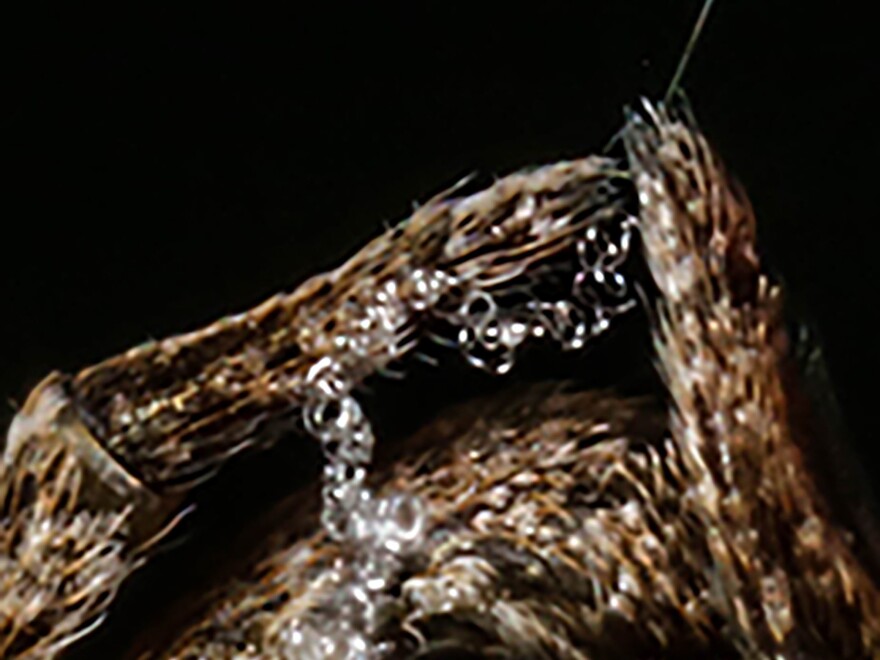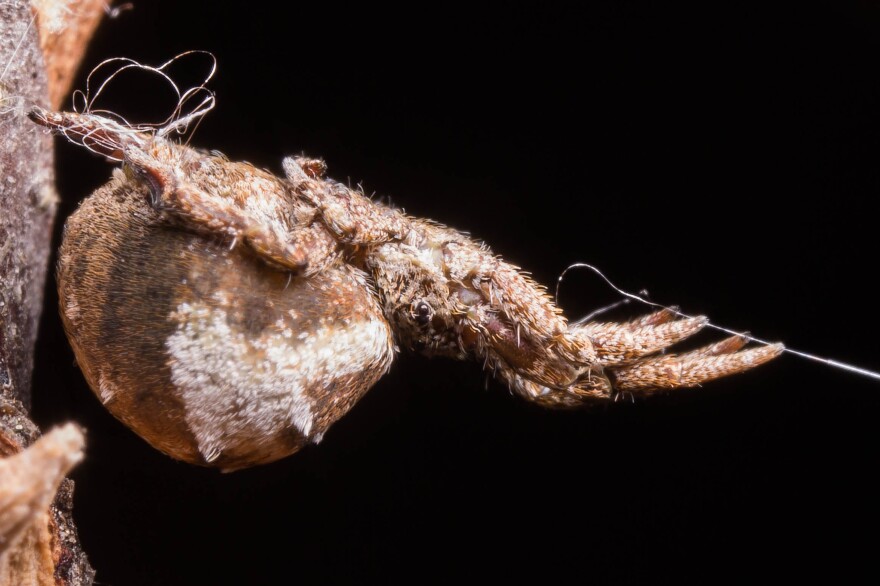This high-velocity maneuver is a nightmare if you're a fly.
There's a type of spider that can slowly stretch its web taut and then release it, causing the web to catapult forward and ensnare unsuspecting prey in its strands.
Triangle-weaver spiders use their own web the way humans might use a slingshot or a crossbow. Scientists from the University of Akron say this is a process called "power amplification," and they published their research in Proceedings of the National Academy of Sciences this week.
The web is stretchy, which allows the spider to amplify its own power by using what the scientists call "elastic recoil." Study co-author Daniel Maksuta, a physicist at the University of Akron, tells NPR that the maneuver "causes much larger forces and therefore much larger acceleration."
Scientists say the slingshot-like move shows spiders can use a tool, their own web, in a way that only humans were known to do.
"I think it's just an amazing image to think of — spiders loading up energy in a spiderweb and then deploying it to catch prey," says Sheila Patek, a Duke University biologist and expert in the mechanics of animal movement, who was not involved in the study. Besides humans, she says, "I can't think of another example where an animal, you know, takes something externally that they've built and then loaded it up" in the same way.
Here's how the move works: A triangle-weaver spider makes a triangle-shape web, with a single thread bridging the main body of the triangle and a wall. Then, while gripping that single thread, "it walks backward and it tightens the web so it's storing this elastic energy within the whole triangle shape of the web," says Sarah Han, a biologist at the University of Akron and the study's lead author.
The spider coils the single strand between its legs tighter and tighter, as if it is pulling back a rubber band. Han says she has seen spiders hold that coiled strand for hours, waiting for prey to fall into the web.

"When it senses prey hitting the web it releases its legs from the back line," says Han. "And this causes the spider and the web to spring forward with that release of energy, as if you had released that rubber band. ... This causes oscillations in the web that start to entangle the prey."
She says the spider may repeat this multiple times, tightening and then releasing the web so the prey gets more and more tangled and trapped.
The web and spider spring forward together with incredible velocity — Han says it's the equivalent of traveling some 400 of the spider's body lengths per second.
To study how the spiders carried out this maneuver, Han says the scientists collected triangle-weaver spiders near the university in Ohio and had them build webs in the lab. They then enclosed the webs in terrariums and would release flies into them. Eventually, the fly would fall into the spider's web as the scientists looked on.
"We were recording all of this with high-speed video cameras," Han says, and then they would use "motion tracking and software to get the position data, and from that we can get things like velocity and acceleration."
Han says this isn't the first time someone has noticed the spider's impressive maneuver, but "no one had actually quantified it" until their study.
It's worth noting that there are many different kinds of spiders, and they use their webs in different ways. For example, orb-weaver spiders make the kind of circular, spiral webs that probably come to mind when you think of what a spiderweb looks like. That kind of spider doesn't fire its web at prey — the web stays static.
Additionally, the scientists say that typically when biologists think about "power amplification," they're describing how animals store and release energy within their own bodies. There are many examples of this, such as the jumping of fleas and frogs, and the sharp strike of a mantis shrimp.
But the scientists say the triangle-weaver spider largely didn't need to evolve ways to store and release energy within its body like those other animals — because it adapted its own tool, a web, as a weapon.
Copyright 2023 NPR. To see more, visit https://www.npr.org.



